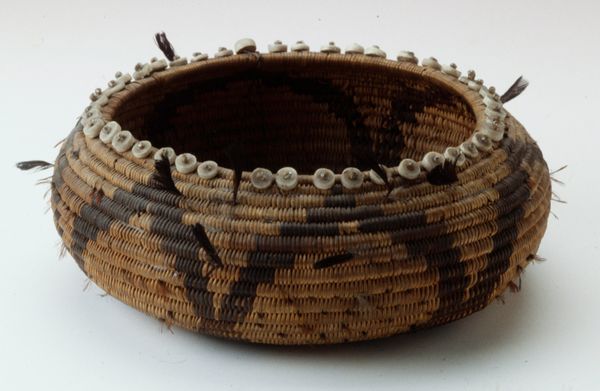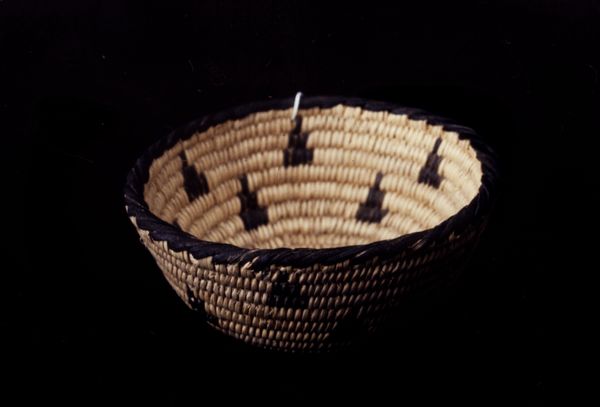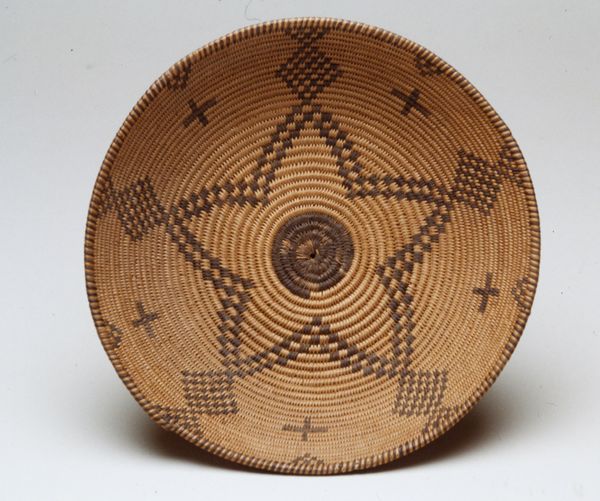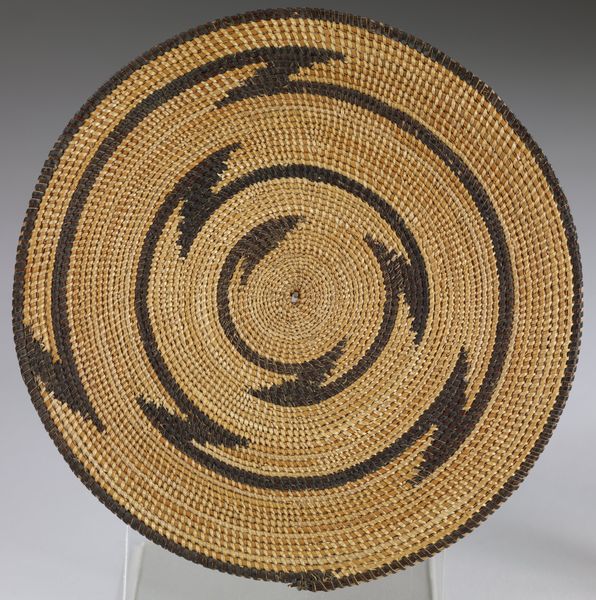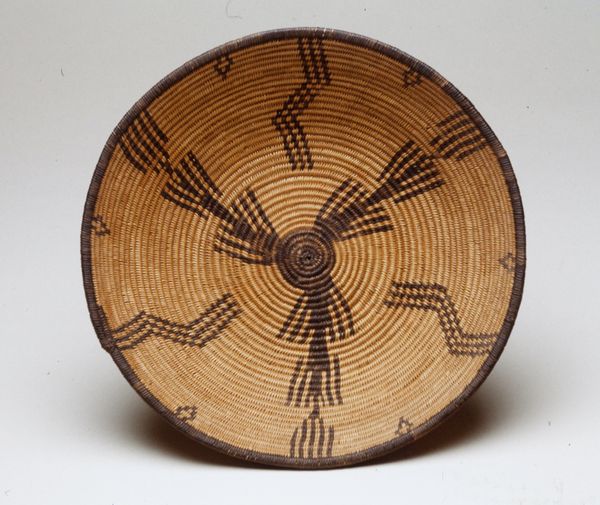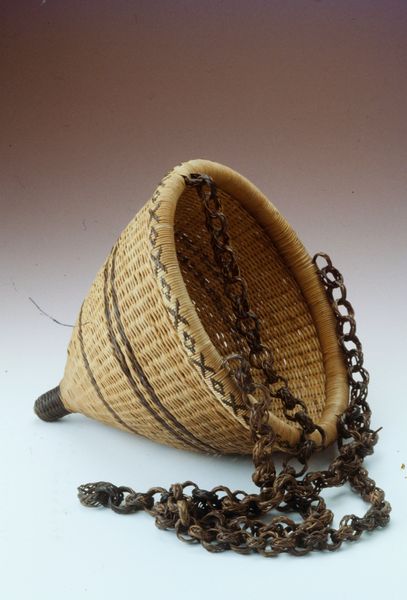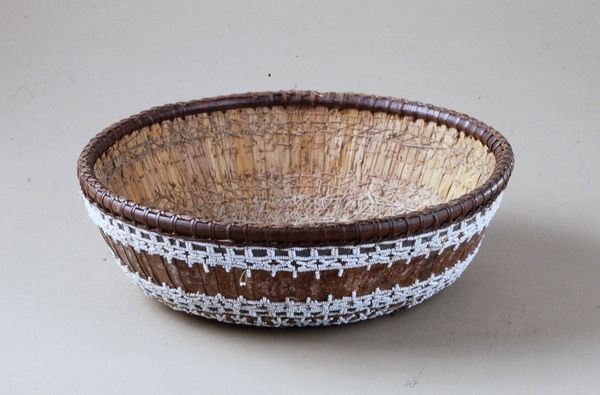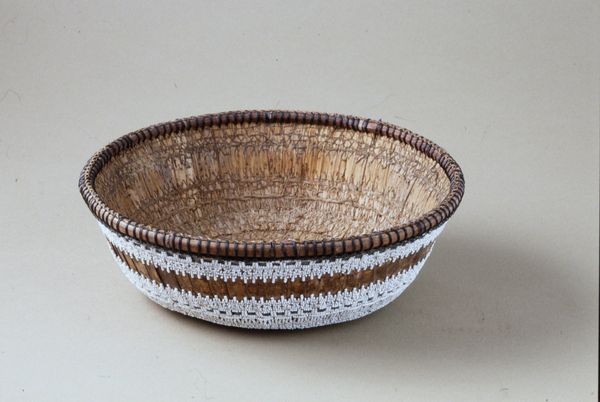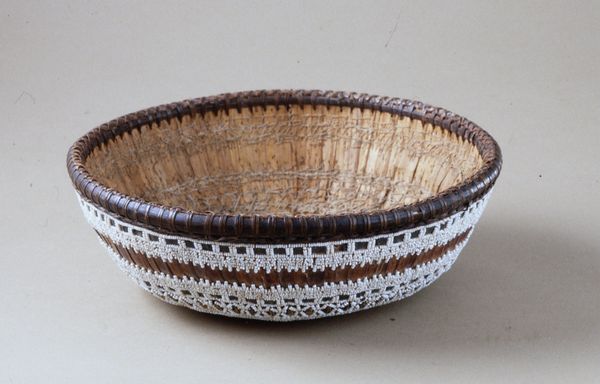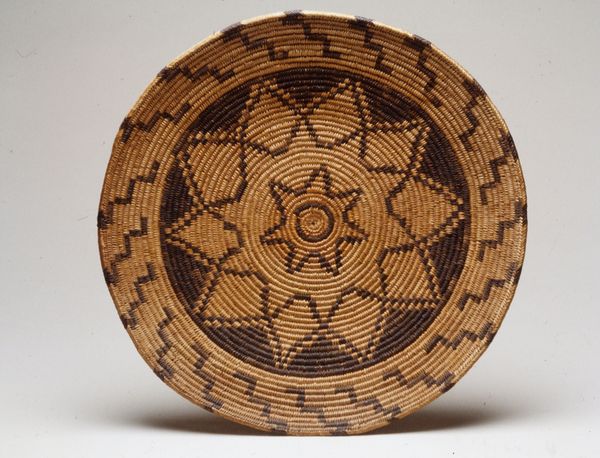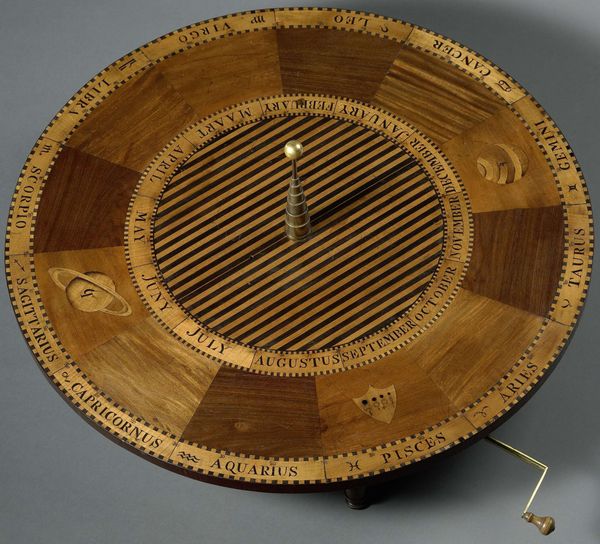
fibre-art, weaving, textile
#
fibre-art
#
weaving
#
textile
#
stoneware
#
ceramic
#
earthenware
Dimensions: 5 1/2 x 22 3/4 x 22 3/4 in. (13.97 x 57.79 x 57.79 cm)
Copyright: Public Domain
Curator: What we’re looking at is simply called “Basket,” dating to around the 20th century and currently residing here at the Minneapolis Institute of Art. Editor: My immediate reaction is just how incredibly tactile this object appears. The woven texture invites touch, doesn't it? It exudes warmth. Curator: Absolutely. As a work of indigenous Americas, such baskets are never purely functional, even if they serve utilitarian roles. The choice of materials, the weaving patterns...these are all infused with cultural meanings. Consider the labor involved. Editor: It must be immense. And meticulous. I'm curious about the material itself. It looks like natural fibers—perhaps grasses or reeds? And how were they dyed to create those darker geometric patterns? The process of gathering, preparing, and weaving these materials speaks to an intricate relationship with the environment. Curator: Exactly. It’s more than a material selection, it embodies sustainable practices tied to place, community, and identity. Weaving, in many Indigenous communities, carries significant symbolic weight and its techniques are passed down through generations, encoding ancestral knowledge. Editor: Do we know the community where it originated? The patterns strike me as intentionally spaced. Is it a language in itself? Are there recurring symbols within the bandings? Curator: Without further identifying information it’s hard to assign this piece a precise origin or creator, or definitively decode symbolism, but we know decorative elements weren’t applied randomly. In addition, there were social roles involved—was the creator a specific gender, and how would that status play out with the construction and use of the vessel? The basket speaks, albeit quietly, about these power dynamics. Editor: And considering those aspects highlights how baskets like these, made from such humble means, challenge traditional hierarchies of value. They transcend mere craft. Curator: Indeed. And approaching such “utilitarian” works through an art historical lens grants insights not only into Indigenous histories, but also prompts questions about the broader history of labour, sustainability and art. Editor: For me, considering the labor and intention poured into forming a humble fiber artifact generates newfound appreciation and encourages questioning established standards. Thanks. Curator: It's been very enlightening to share viewpoints. This examination has given renewed perspective regarding this artwork.
Comments
No comments
Be the first to comment and join the conversation on the ultimate creative platform.
